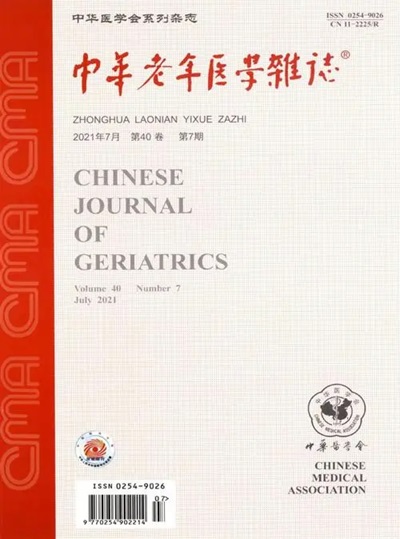Clinical study of comprehensive endovascular treatment for acute deep vein thrombosis in elderly patients
引用次数: 0
Abstract
Objective To investigate the safety and clinical efficacy of comprehensive endovascular treatment for acute deep vein thrombosis(DVT)in elderly patients. Methods Clinical data of 94 elderly patients who underwent endovascular treatment from June 2013 to June 2016 were retrospectively analyzed.All patients underwent inferior vena cava filter implantation(IVCF). Of them, 57 patients initially underwent thrombectomy and subsequently received the adjunctive catheter-directed thrombolysis(CDT)(Group A)and 37 cases underwent CDT(Group B). Clinical efficacy and safety of treatments in the two groups were examined. Results Among the 94 patients, 88 cases had retrievable IVCF, and the retrieval rate was 94.3%(83/88). There were significant differences in total infusion time(73.92±31.68 h vs.156.2±30.2 h)and total doses of infused thrombolytic agents(180.71±44.83 million unit vs.355.0±96.0 million unit)between Groups A and B(P 0.05). Fifty-six patients were treated with angioplasty(PTA), 34 of them were combined with stent implantation, and there was no difference between the two groups(χ2=1.128, P>0.05). Neither of the two groups saw serious complications.The incidence of minor hemorrhage was 9.6%(9/94), including 2 cases and 7 cases in Group A and Group B respectively, and the difference was statistically significant(χ2=4.503, P=0.034). The average follow-up time was 16.7±8.3 months in the 94 patients, and the stent patency rate was 91.2%(31/34). Doppler ultrasonography results at the last follow-up showed that the reverse flow rate of the valve was 20.2%(19/94), the occurrence rates of post-thrombotic syndrome(PTS)were 24.6%(14/57)and 29.7%(11/37)in Group A and Group B respectively, and the difference was not statistically significant(χ2=0.307, P=0.580). Patients in the mild, moderate and severe stages assessed by Villata scoring were 9 vs.6, 4 vs.5, 0 vs.1 in Group A and Group B respectively, and the differences were not statistically significant(χ2=0.007 and 0.205, P>0.05). Conclusions It is safe and effective for elderly patients with DVT when timely and appropriate the treatment strategies are chosen and comprehensive approaches including IVCF, anticoagulation, endovascular CDT, thrombectomy, PTA and stent implantation are used. Key words: Venous thrombosis; Thrombolytic therapy; Radiology, interventional血管内综合治疗老年急性深静脉血栓形成的临床研究
目的探讨血管内综合治疗老年急性深静脉血栓形成(DVT)的安全性和临床疗效。方法回顾性分析2013年6月至2016年6月接受血管内治疗的94例老年患者的临床资料。所有患者均接受下腔静脉滤器植入术(IVCF)。其中57例患者最初接受了血栓切除术,随后接受了辅助导管导向溶栓(CDT)(A组),37例患者接受了CDT(B组)。对两组治疗的临床疗效和安全性进行了检查。结果在94例患者中,88例IVCF可恢复,恢复率为94.3%(83/88)。A组和B组的总输注时间(73.92±31.68h与15.62±30.2h)和溶栓剂总输注量(18071±4483万单位与55.0±9600万单位)差异有统计学意义(P<0.05),其中34例合并支架置入,两组比较差异无统计学意义(χ2=1.128,P>0.05),两组均未出现严重并发症。小出血发生率9.6%(9/94),其中A组2例,B组7例,差异有统计学意义(χ2=4.503,P=0.034),支架通畅率为91.2%(31/34)。最后一次随访时的多普勒超声结果显示,瓣膜逆流率为20.2%(19/94),A组和B组血栓后综合征(PTS)的发生率分别为24.6%(14/57)和29.7%(11/37),差异无统计学意义(χ2=0.307,P=0.580),A组和B组维拉塔评分评估的中、重度分别为9比6、4比5、0比1,差异无统计学意义(χ2=0.007和0.205,P>0.05),血管内CDT、血栓切除术、PTA和支架植入术。关键词:静脉血栓形成;溶栓治疗;放射学,介入
本文章由计算机程序翻译,如有差异,请以英文原文为准。
求助全文
约1分钟内获得全文
求助全文

 求助内容:
求助内容: 应助结果提醒方式:
应助结果提醒方式:


